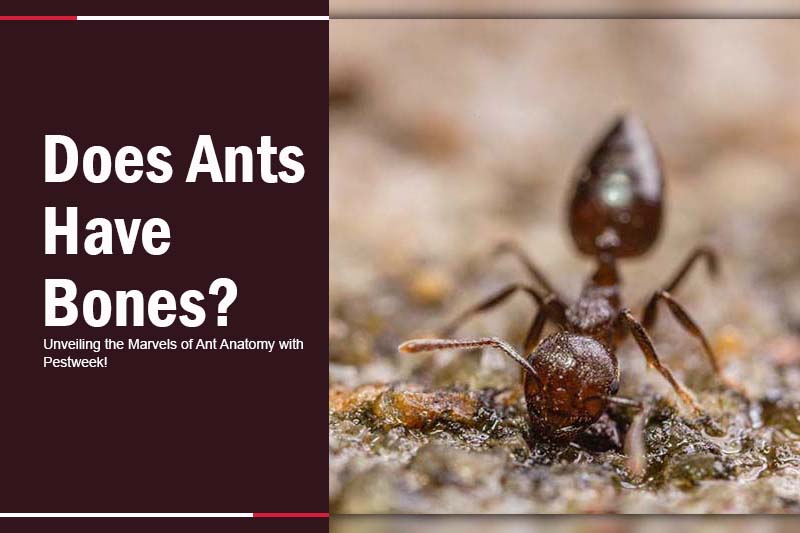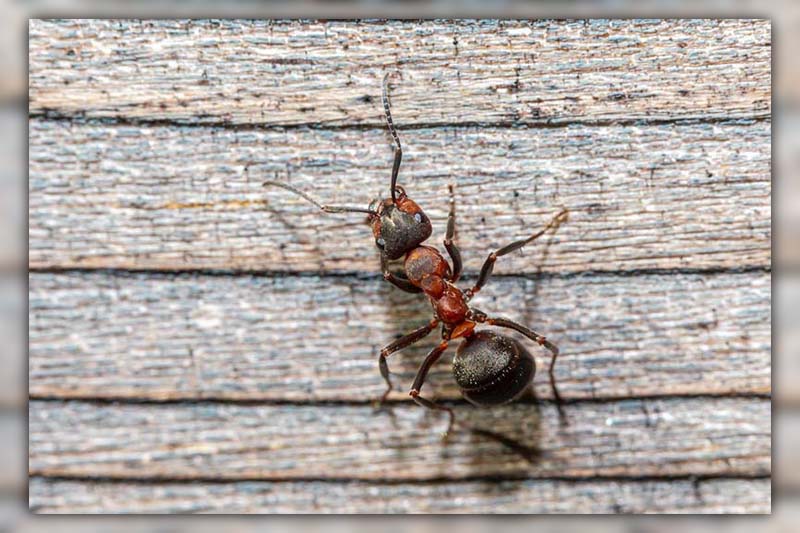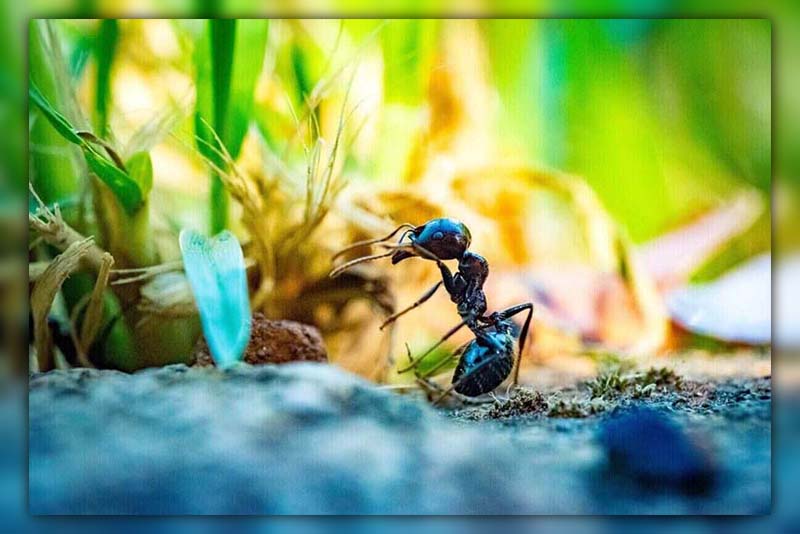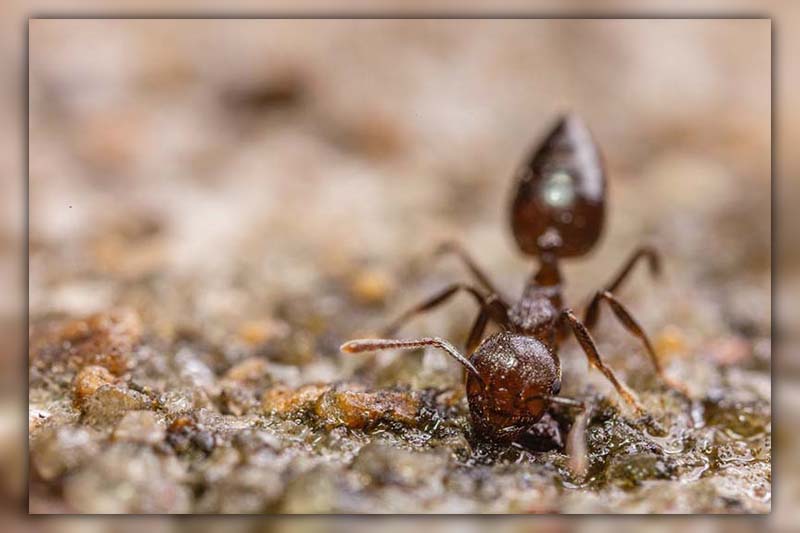If the question “Do ants have bones?” has ever crossed your mind, you’re in for an enlightening journey.
Join us as we uncover the secrets behind why ants lack bones, and how their exoskeletons shape their lives in remarkable ways.

Do Ants have Bones?
Ants, categorized as invertebrates, do not possess endoskeletons or bones.
Instead, they have evolved alternative support systems to uphold their muscles and internal organs.
Why Don’t Ants Have Bones?
The absence of bones in ants is due to their classification as invertebrates, a group characterized by the absence of backbones or bony structures.
In place of bones, invertebrates utilize either hydrostatic skeletons or exoskeletons.
- Hydrostatic Skeleton: This type involves a fluid-filled compartment called the coelom, mainly seen in soft-bodied animals like Cnidarians and earthworms.
- Exoskeleton: Ants belong to this category, having an external skeletal system. Arthropods, including ants, utilize exoskeletons for support and protection.
What is an Exoskeleton?
An exoskeleton is an external, sturdy skin composed of chitin—a material found in our hair and nails—that provides support and protection for an animal’s muscles and organs.
While this shield safeguards against harm and weather, it comes with both advantages and drawbacks.
5 Advantages of the Exoskeleton in Ants
Protecting Ants from External Harm
Ants boast an external armor—exoskeleton—defending them from external threats, ensuring their safety.
Helping Ants Adapt to Weather Changes
This exoskeleton aids ants in weather fluctuations, keeping them dry in rain and preventing excessive moisture loss during hot days.
Protecting Ants Against Predators and Infections
Ants’ exoskeleton acts as a robust defense, guarding against predators and infections, promoting their survival.
Enhancing Muscle Function in Ants
The exoskeleton enhances ant muscle function, allowing them to perform demanding tasks effectively.
Assisting in Superior Mobility of Common Appendages
Ants’ exoskeleton supports superior mobility in their appendages, enabling their remarkable feats.
4 Disadvantages of Exoskeletons in Ants
Inefficient Operation of Sensory Organs
Ants’ exoskeletons can hinder efficient operation of sensory organs, potentially affecting their perception of the environment.
Growth Limitations
Due to the rigid nature of exoskeletons, ants face limitations in growth. Shedding their exoskeleton to accommodate growth poses risks.
Fatal injuries
While offering protection, the exoskeleton may not shield ants from all fatal injuries, leaving them exposed to certain risks.
Safety risks during shedding
The shedding process, vital for growth, temporarily leaves ants vulnerable to predators and external dangers until their new exoskeleton hardens.
The Difference Between Bones and Exoskeletons
Skeletons come in two primary types: exoskeletons and endoskeletons. Exoskeletons are external, covering the body’s exterior, while endoskeletons reside within the body.
Bones: An Endoskeletal Framework
Bones are a form of endoskeleton, internal structures that provide robust support to the body. They are rigid and offer structural integrity.
Exoskeletons: Protection and Growth
Exoskeletons, often composed of lightweight chitin, encase the body externally. Insects rely on exoskeletons for support and protection.
Advantages of Exoskeletons:
- Size Flexibility: Exoskeletons permit animals to grow to the size dictated by their environment, unhindered by internal constraints.
- Defense and Shelter: Exoskeletons shield creatures from predators and environmental elements.
Drawbacks of Exoskeletons:
- Repair Limitations: Unlike bones, exoskeletons can’t self-repair when damaged.
- Molting for Growth: Insects must molt to accommodate growth, temporarily exposing them to predation and infection until their new exoskeleton hardens.
FAQs
Do all Insects have Exoskeletons?
Yes, all insects have exoskeletons—a protective outer shell that covers their bodies.
This exoskeleton serves as both armor and moisture retention.
Do ants have bones in their legs?
No, ants do not possess bones in their legs.
Instead, their legs are supported by a series of exoskeletal structures, which provide strength and mobility without the added weight of bones.
Do ants have a spinal cord?
No, ants and other invertebrates lack a spinal cord.
Their exoskeletons provide external support, and their body structure doesn’t include a complex backbone found in vertebrates.
Conclusion
We hope this blog answers your question “Do Ants Have Bones?“, no matter whether you’re an avid insect enthusiast or simply curious about the natural world.
But our journey doesn’t end here. For more captivating insights into the fascinating realm of insects and beyond, don’t hesitate to explore the array of blogs waiting for you at Pestweek.

Calina Mabel has over 15 years of experience in the field of journalism and communications. Currently, Calina Mabel is the Content Writer for categories such as Cockroach, Ants, Bed Bugs, Mosquito, Rodent, Termite, and Flies on Pestweek.com. She aims to build content for these categories with a focus on providing valuable and accessible information to readers, in order to create the world’s largest knowledge community about Pests.
All content written by Calina Mabel has been reviewed by Emily Carter.




